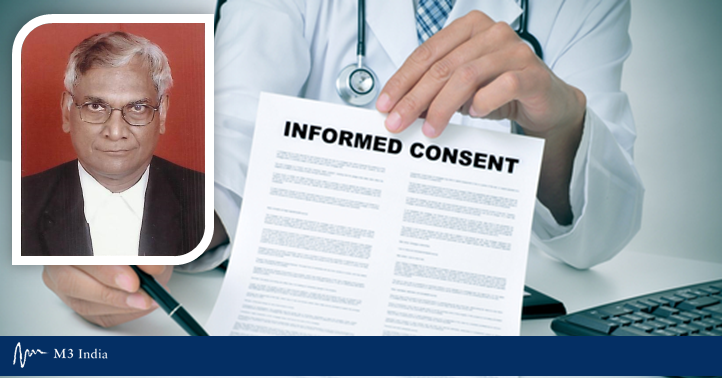Is there a difference between real consent and informed consent? Dr. MC Gupta explains
M3 India Newsdesk Dec 06, 2018
Dr. MC Gupta, a doctor turned lawyer, guides with practical answers and insights for queries posted by Indian doctors. Here he answers one such query related to patient consent.

What is the difference between real consent and informed consent?
Dr. MC Gupta explains...
A— The term real consent is used in Britain while the term informed consent is used in USA. [Note: In India, the courts almost always use the term informed consent and not real consent.]
B— In real consent, the elements of consent are defined with reference to the patient and a consent is considered to be valid and 'real' when:
(i) the patient gives it voluntarily without any coercion
(ii) the patient has the capacity and competence to give consent
(iii) the patient has the minimum of adequate level of information about the nature of the procedure to which he is consenting to
C— The concept of informed consent, while retaining the basic requirements consent, shifts the emphasis to the doctor's duty to disclose the necessary information to the patient to secure his consent.
'Informed consent' is defined in Taber's Cyclopedic Medical Dictionary as:
"Consent that is given by a person after receipt of the following information : the nature and purpose of the proposed procedure or treatment; the expected outcome and the likelihood of success; the risks; the alternatives to the procedure and supporting information regarding those alternatives; and the effect of no treatment or procedure, including the effect on the prognosis and the material risks associated with no treatment. Also included are instructions concerning what should be done if the procedure turns out to be harmful or unsuccessful."
D— The ingredients of informed consent (which have a wider ambit than real consent) are summarised below as follows:
(i) the patient has the capacity and competence to give consent
(ii) the patient gives the consent voluntarily without any coercion
(iii) the patient has the minimum of adequate level of information about the nature of the procedure to which he is consenting to
iv) the patient gives consent after receiving the following information:
a) The nature and purpose of the proposed procedure or treatment
b) The expected outcome and the likelihood of success
c) The risks; the alternatives to the procedure and supporting information regarding those alternatives
d) The effect of no treatment or procedure, including the effect on the prognosis and the material risks associated with no treatment.
v) The patient gives instructions concerning what should be done if the procedure turns out to be harmful or unsuccessful
Disclaimer- The views and opinions expressed in this article are those of the author's and do not necessarily reflect the official policy or position of M3 India.
Content from the writer has been directly replicated on the website. No edits have been made.
The writer, Dr. MC Gupta is a practising lawyer specialising in medical negligence cases. He also has an MD Medicine from AIIMS, Delhi where he also worked as a faculty member for 18 years, later working another 10 years as a Professor and Dean at National Institute of Health and Family Welfare, New Delhi, before pursuing law.
-
Exclusive Write-ups & Webinars by KOLs
-
Daily Quiz by specialty
-
Paid Market Research Surveys
-
Case discussions, News & Journals' summaries